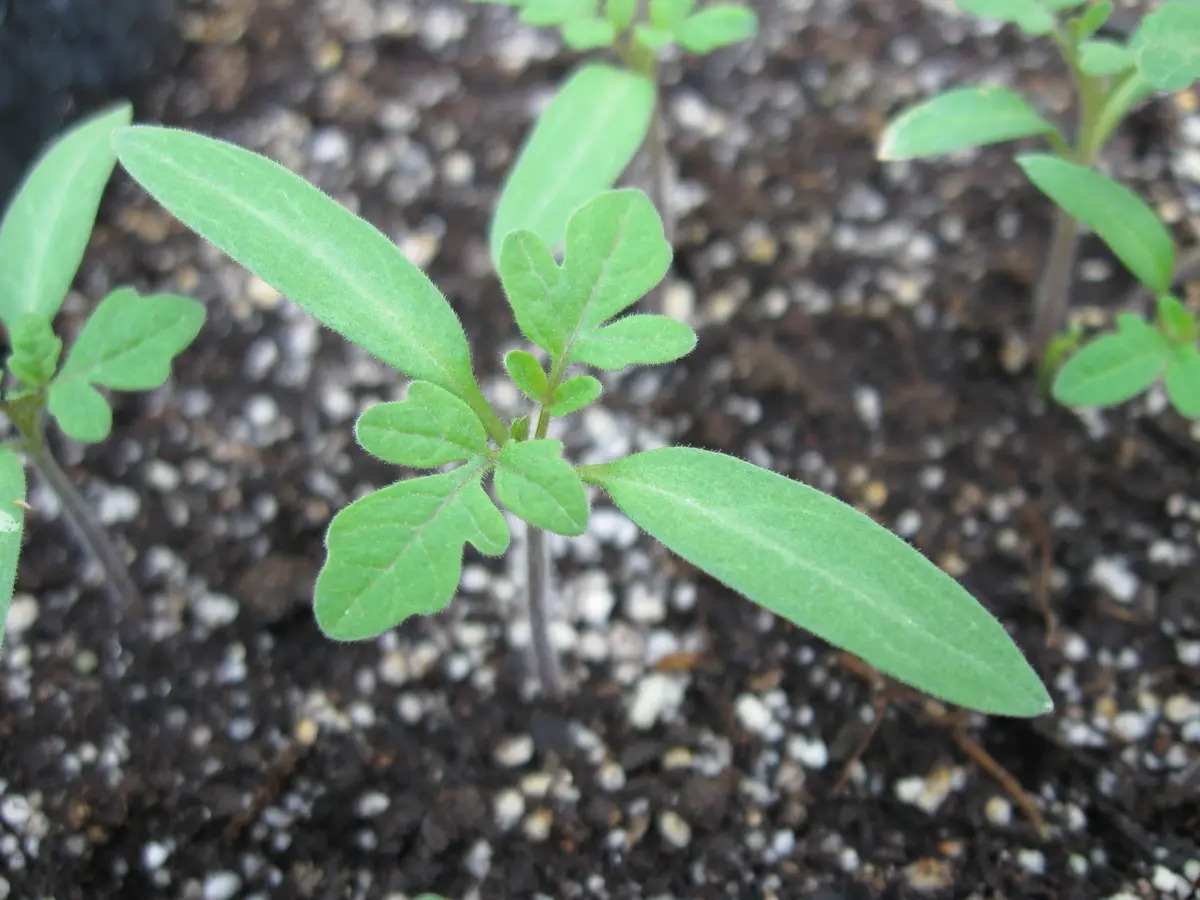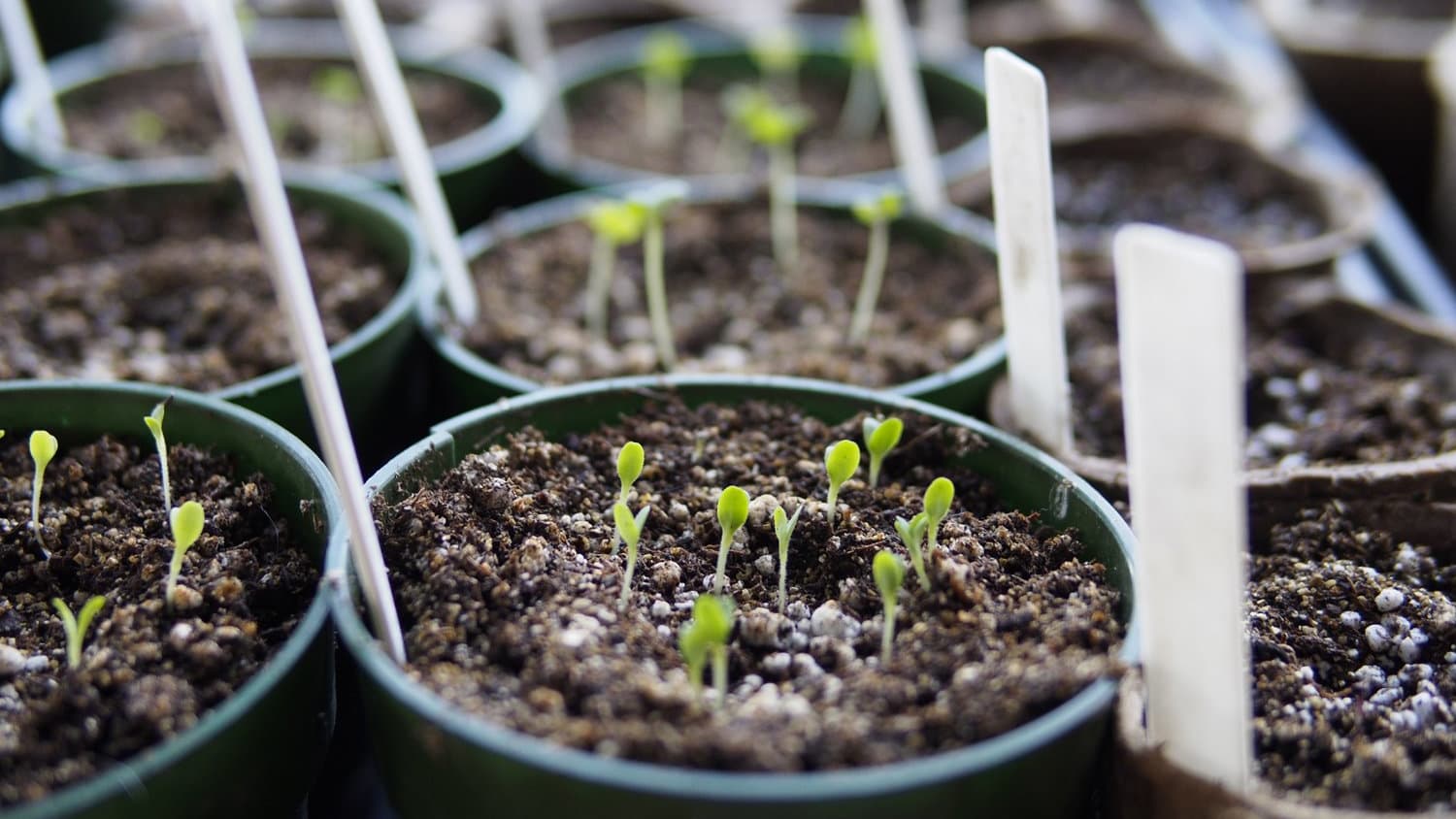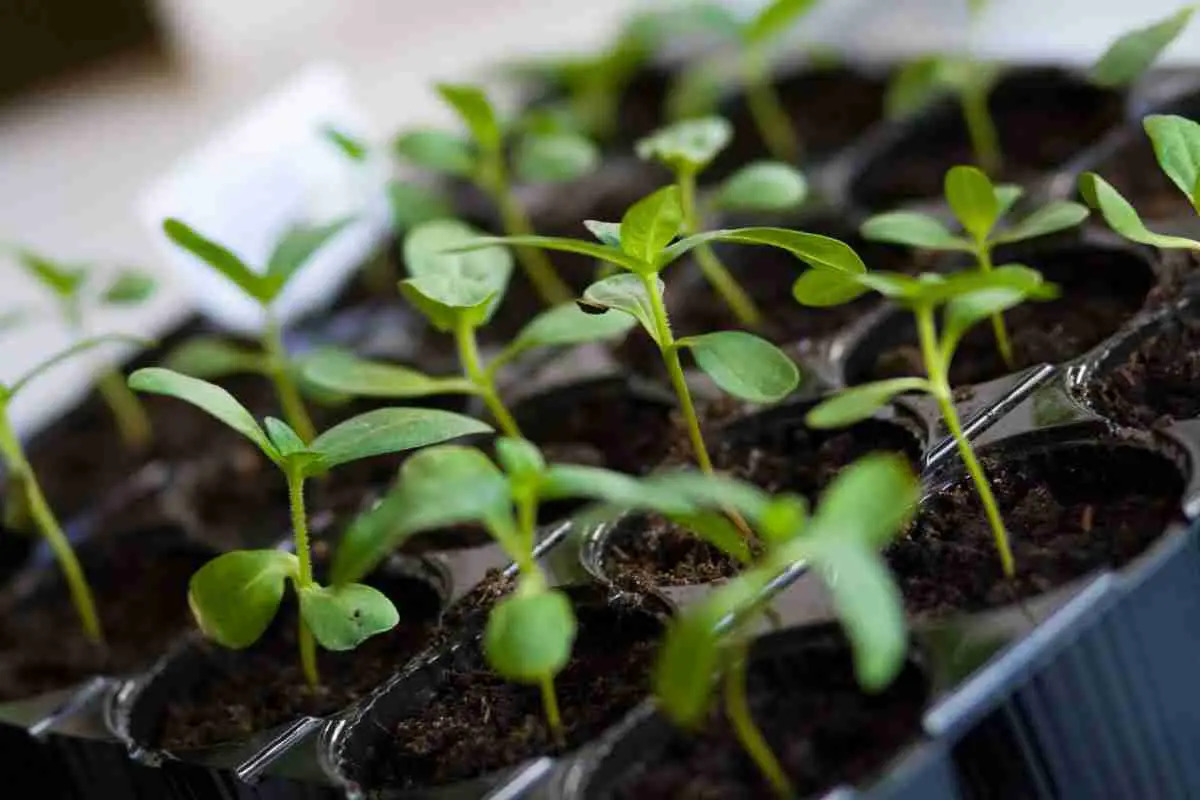Home>Gardening Techniques>Plant Care>How Long To Leave Grow Lights On Seedlings


Plant Care
How Long To Leave Grow Lights On Seedlings
Modified: January 22, 2024
Discover the optimal duration for leaving grow lights on seedlings for proper plant care. Maximize growth and avoid damage with our expert tips.
(Many of the links in this article redirect to a specific reviewed product. Your purchase of these products through affiliate links helps to generate commission for Chicagolandgardening.com, at no extra cost. Learn more)
Table of Contents
- Introduction
- Understanding the Importance of Grow Lights for Seedlings
- Factors to Consider When Determining How Long to Leave Grow Lights on Seedlings
- The Importance of Light Intensity and Distance for Seedlings
- Recommended Duration for Leaving Grow Lights on Seedlings
- Monitoring and Adjusting Grow Light Duration for Optimal Growth
- Tips for Using Grow Lights Efficiently and Effectively
- Conclusion
Introduction
Welcome to the world of plant care! Whether you are a seasoned gardener or just starting out, one of the most important aspects of successful plant growth is providing the right amount of light. While natural sunlight is ideal, this may not always be sufficient, especially for seedlings that require a consistent and controlled light source.
Grow lights have become an invaluable tool for gardeners, allowing them to provide optimal light conditions for their plants, regardless of the time of year or location. These artificial lights mimic the spectrum and intensity of sunlight, giving seedlings the necessary boost they need to thrive and grow.
However, determining how long to leave grow lights on seedlings can be a bit confusing. Too much or too little light can have a significant impact on their growth, leading to stunted development or even plant death. In this article, we will explore the factors to consider when determining the duration of grow light exposure for seedlings, as well as offer recommendations for monitoring and adjusting the light duration for optimal growth.
So grab your gardening gloves and let’s dive into the fascinating world of grow lights and seedling care!
Understanding the Importance of Grow Lights for Seedlings
As seedlings emerge from their delicate cocoons, they rely heavily on light for photosynthesis, the process by which they convert light energy into glucose, their primary source of food. While natural sunlight is the best option for providing this light, it may not always be available or sufficient, especially during the darker months or in areas with limited sun exposure.
This is where grow lights come into play. Grow lights are specially designed to emit the right spectrum of light that plants need for optimal growth. They typically produce red and blue wavelengths, which are key components for photosynthesis. These lights can be adjusted to provide the perfect balance of light intensity and duration, ensuring that seedlings receive the necessary light energy to flourish.
One of the key advantages of using grow lights for seedlings is the control they provide over the light cycle. Unlike natural sunlight, which varies throughout the day, grow lights can be set to a specific on/off schedule, providing consistent and uninterrupted light to the plants. This control is especially crucial during the early stages of growth, when seedlings are fragile and require stable conditions for development.
Another benefit of grow lights is their ability to supplement natural sunlight. Even if you have access to sunlight, it may not always be enough to meet the needs of your seedlings. By using grow lights in conjunction with natural light, you can ensure that your seedlings receive a balanced and consistent light source, regardless of the weather conditions or time of year.
Moreover, grow lights allow gardeners to extend the growing season, making it possible to start seedlings indoors before transferring them to an outdoor garden. This is particularly advantageous for those living in regions with short growing seasons, as it gives seedlings a head start and increases the chances of a successful harvest.
Now that we understand the importance of using grow lights for seedlings, let’s delve into the factors that should be considered when determining how long to leave these lights on for optimal growth.
Factors to Consider When Determining How Long to Leave Grow Lights on Seedlings
When it comes to determining the duration of grow light exposure for seedlings, there are several factors that should be taken into consideration. Understanding these factors will help you provide the ideal light conditions for your seedlings, promoting healthy growth and development. Let’s explore them below:
- Seedling species: Different plant species have varying light requirements. Some may thrive with just a few hours of light each day, while others may need more extended exposure. Research the specific light needs of the seedlings you are growing to ensure you provide the optimal duration.
- Growth stage: The stage of growth also plays a role in determining the light requirements. Seedlings in the early stages, such as germination and leaf development, typically require less light compared to those in the later stages, such as stem and root development. Adjust the duration of grow light exposure based on the growth stage of your seedlings.
- Light intensity: The intensity of grow lights can vary depending on the type of light source. Some lights may be more powerful and emit higher levels of light, while others may be less intense. Consider the intensity of your grow lights and ensure it aligns with the light requirements of your seedlings.
- Distance from lights: The distance between the grow lights and the seedlings is crucial. If the lights are too close, it can lead to heat stress and damage the plants. On the other hand, if the lights are too far, it may result in weak and leggy seedlings. Follow the manufacturer’s recommendations for the optimal distance between the lights and the seedlings.
- Light spectrum: The spectrum of light emitted by grow lights also impacts seedling growth. Different wavelengths of light play different roles in plant development, such as stimulating leaf growth or promoting flowering. Ensure that the grow lights you are using provide the right balance of red and blue wavelengths for healthy seedling growth.
- Environmental conditions: The overall environmental conditions, such as temperature and humidity, can affect how long seedlings should be exposed to grow lights. Higher temperatures may require shorter durations, while lower temperatures may necessitate longer durations. Monitor and adjust the light exposure based on the specific conditions of your growing space.
By considering these factors, you can tailor the duration of grow light exposure to meet the specific needs of your seedlings. Monitoring their growth and observing any signs of stress or inadequate lighting will help you make adjustments for optimal plant development. In the next section, we will discuss the recommended duration for leaving grow lights on seedlings.
The Importance of Light Intensity and Distance for Seedlings
When it comes to providing the right growing conditions for seedlings, light intensity and distance play a crucial role. Finding the ideal balance between these two factors is essential for ensuring the healthy growth and development of your seedlings. Let’s explore the importance of light intensity and distance in more detail:
Light intensity: The intensity of light refers to the brightness or strength of the light emitted by grow lights. Seedlings require a sufficient amount of light energy to carry out photosynthesis and promote healthy growth. If the light intensity is too low, seedlings may become weak and leggy, with elongated stems and sparse leaves. On the other hand, if the light intensity is too high, it can lead to heat stress and damage the delicate seedlings.
It’s important to find the right balance of light intensity to meet the specific needs of your seedlings. This can be achieved by choosing grow lights with adjustable settings or by placing the lights at the appropriate distance from the seedlings. Monitoring the seedlings closely and observing their response to the light intensity will allow you to make necessary adjustments.
Distance from lights: The distance between the grow lights and the seedlings is equally important. If the lights are too close to the seedlings, they can cause excessive heat, which can lead to the wilting and burning of the plant tissues. On the other hand, if the lights are too far away, the seedlings may stretch and become weak as they reach for the light source, resulting in spindly growth.
It’s recommended to follow the manufacturer’s guidelines for the optimal distance between the grow lights and the seedlings. Typically, for fluorescent lights, a distance of 6 to 12 inches is ideal, while for LED lights, a distance of 12 to 24 inches works well. Regularly check the seedlings for signs of stress, such as drooping leaves or discoloration, and adjust the distance accordingly.
By ensuring the right light intensity and distance, you can provide your seedlings with an environment that promotes healthy growth and development. In the next section, we will discuss the recommended duration for leaving grow lights on seedlings to further optimize their growth.
Recommended Duration for Leaving Grow Lights on Seedlings
When it comes to determining the duration of grow light exposure for seedlings, finding the right balance is crucial. Too little light can result in weak and stunted growth, while too much light can lead to stress and damage. While the specific duration may vary depending on factors such as the species of seedlings and the stage of growth, here are some general recommendations:
- Seedling stage: During the germination and early leaf development stage, seedlings generally require around 12 to 16 hours of light exposure per day. This extended duration helps facilitate healthy growth and establishment of the young plants.
- Established seedlings: As seedlings grow and develop, the light duration can be gradually reduced to about 10 to 12 hours per day. This reduces the risk of overexposure and gives the plants an opportunity to rest and regenerate during the darker periods.
- Light breaks: Just like humans, plants benefit from a period of darkness to rest and recharge. It’s recommended to provide a break of at least 8 hours of darkness per day, allowing the seedlings to enter a natural photoperiod that simulates day and night cycles.
It’s important to note that these recommendations are general guidelines and may need to be adjusted based on the specific requirements of the seedlings you are growing. Observing the seedlings closely and monitoring their growth and response to light will help you make necessary adjustments.
Furthermore, it’s important to divide the recommended light duration into multiple sessions of continuous light rather than providing it all at once. This allows for consistent light distribution and reduces the risk of heat stress or damage to the seedlings. For example, you can use a timer to set the lights to turn on for 6 hours, then off for 2 hours, and then on again for another 6 hours.
Remember to regularly evaluate the growth and health of your seedlings to determine if any changes in light duration are needed. Seedlings that are receiving optimal light conditions will exhibit vigorous growth, healthy foliage, and a sturdy overall appearance.
In the next section, we will discuss the importance of monitoring and adjusting grow light duration for optimal growth of seedlings.
Monitoring and Adjusting Grow Light Duration for Optimal Growth
Ensuring optimal growth for your seedlings requires continuous monitoring and adjustments of the grow light duration. By closely observing the response of the seedlings to the light conditions, you can make necessary tweaks to promote healthy development. Here are some essential tips for monitoring and adjusting grow light duration:
- Regular observation: Take the time to regularly observe your seedlings for any signs of light stress or inadequate lighting. Look for symptoms such as elongated stems, yellowing or browning of leaves, or stunted growth. Adjust the light duration if you notice any of these signs, as it may indicate that the seedlings are getting too much or too little light.
- Growth progress: Monitor the growth progress of your seedlings as they develop. Healthy seedlings should exhibit steady growth, with strong stems, vibrant foliage, and well-developed root systems. If you notice slow or stunted growth, it may be an indication that the light duration needs adjustment.
- Seedling response: Pay attention to how the seedlings respond to the light duration. If they appear to be stretching or leaning towards the light source, it may suggest that the light duration is insufficient. On the other hand, if the foliage looks stressed or wilted, it may indicate that the light duration is too long.
- Gradual adjustments: When making adjustments to the grow light duration, it’s important to do so gradually. Sudden changes in light duration can shock the seedlings and lead to stress or damage. Increase or decrease the light duration by 15-30 minutes each time, allowing the seedlings to acclimate to the new light conditions.
- Observe plant response: After making adjustments, carefully observe how the seedlings respond to the changes. If they show signs of improvement, such as renewed growth or perking up, it’s a positive indication that you are on the right track. If there are no changes or the seedlings display further stress, consider making additional adjustments.
- Keep records: It can be helpful to keep a record of the adjustments you make to the grow light duration and the corresponding response of the seedlings. This will allow you to track the progress and identify any patterns or trends in the growth and development of your seedlings.
Remember, seedlings can vary in their light requirements, so it’s important to tailor the duration to meet their specific needs. By closely monitoring the response of the seedlings and making appropriate adjustments, you can provide the optimal light conditions for healthy growth and development.
In the next section, we will provide some useful tips for using grow lights efficiently and effectively.
Tips for Using Grow Lights Efficiently and Effectively
Using grow lights efficiently and effectively is essential for ensuring the success of your seedlings. By following these tips, you can optimize your use of grow lights and promote healthy growth and development:
- Choose the right grow lights: There are various types of grow lights available, including fluorescent, LED, and high-intensity discharge (HID) lights. Research the light requirements of your seedlings and choose the most suitable option. LED lights are energy-efficient and provide a well-balanced spectrum, making them a popular choice among gardeners.
- Position the lights correctly: Place the grow lights at the appropriate distance from the seedlings to ensure optimal light distribution. Follow the manufacturer’s guidelines for the recommended distance. Remember to regularly adjust the height as the seedlings grow to maintain the proper distance.
- Use timers: Investing in timers can help you automate the light schedule for your seedlings. Timers allow you to set consistent on/off cycles, providing a consistent light period and allowing the seedlings to enter a natural day-night rhythm.
- Rotate the seedlings: To ensure even light exposure, periodically rotate the seedling trays or pots. This helps prevent the seedlings from leaning or stretching toward the light source, promoting symmetrical growth.
- Utilize reflective surfaces: Consider using reflective surfaces, such as Mylar or aluminum foil, to maximize the efficiency of your grow lights. These surfaces help bounce light back onto the seedlings, increasing their overall light exposure.
- Monitor temperature and humidity: Grow lights can generate heat, so it’s important to monitor the temperature and humidity levels in your growing area. Make sure the temperature stays within a suitable range for your seedlings and adjust ventilation or add fans if needed to prevent overheating.
- Consider supplemental lighting: If natural light is limited, supplemental lighting can be beneficial. Use grow lights to augment the available sunlight and provide consistent light to your seedlings.
- Follow seedling care guidelines: In addition to providing the right light conditions, it’s important to follow proper seedling care practices, including appropriate watering, nutrient levels, and temperature control. This holistic approach ensures the overall health and success of your seedlings.
By implementing these tips, you can optimize the use of grow lights for your seedlings and create the ideal environment for their growth. Remember to regularly assess the seedlings’ progress and make any necessary adjustments to ensure they thrive under the grow lights.
In the next section, we will wrap up our discussion on plant care and highlight key takeaways.
Conclusion
Providing the right amount and quality of light is essential for the healthy growth and development of seedlings. Grow lights offer gardeners a valuable tool to ensure consistent and optimal light conditions, regardless of the time of year or location. By understanding the importance of grow lights, considering factors such as light intensity and distance, and monitoring and adjusting the light duration, you can create an ideal environment for your seedlings to flourish.
Remember to research the specific light requirements of your seedlings and adjust the duration accordingly. The stage of growth, light intensity, distance from the lights, and the light spectrum should all be taken into consideration when determining the appropriate light duration. Regular observation of the seedlings’ response to the light conditions is crucial for making necessary adjustments and promoting healthy growth.
Efficiency and effectiveness in using grow lights can be achieved by selecting the right type of lights, positioning them correctly, using timers for consistent light cycles, and utilizing reflective surfaces. Additionally, monitoring temperature and humidity levels, considering supplemental lighting, and following proper seedling care guidelines contribute to the overall success of your indoor plant care.
With the knowledge and application of these plant care techniques, you can create a thriving environment for your seedlings, extending the growing season and optimizing their growth and development. So, embrace the world of grow lights, and enjoy the beauty and rewards of nurturing your plants from seedlings to fully grown wonders!






